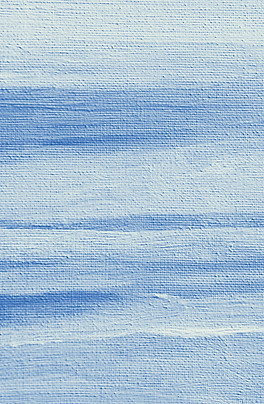
Curated by Han McCoy and Lauren Ruhnke

IMPERIALISM
is a complex process whereby national entities extend their power and influence over other regions and peoples through a variety of ideological, economic, military, and political mechanisms. This exhibit examines American imperialism through the lens of visual culture, represented by ceramic objects. It highlights artifacts from the TALM Commercial Museum collection to explore US expansion of foreign commerce during the late 19th and early 20th centuries.
What can visual culture tell us about imperialism?
The Philadelphia Commercial Museum
The artifacts featured in this exhibit were originally housed in the Philadelphia Commercial Museum (PCM). The Philadelphia Commercial Museum was founded in 1893 by Dr. William P. Wilson at the University of Pennsylvania.
GALLERY
The Philadelphia Commercial Museum served as a centralized resource to provide American entrepreneurs with advice and information about foreign commerce as they attempted to expand their enterprises overseas. The PCM featured a vast collection of foreign commercial goods, and its aesthetic appeal was intended to entice American businessmen to pursue international trade. (1)
At the height of its popularity, the PCM attracted visitors from across the United States, including politicians, businessmen, and academics.

Photographs and descriptions Courtesy of the Special Collections Research Center. Temple University Libraries. Philadelphia, PA.
Process of Empire
The mission of the Philadelphia Commercial Museum was born from broader imperial narratives of late nineteenth and early twentieth century America. During this period, American imperialism was not carried out in the domains of foreign relations, presidential policy, or military action (2). Instead, American imperialism is best understood as a "process of empire" that unfolded in multiple domains of social life. One key component of the American "process of empire" included the "creation and control of knowledge about the rest of the world" (2). The PCM reflects this American imperial process as it aimed to create a systematized, "intellectual architecture for American commercial empire" (2).
How are imperial processes reflected in public discourse?

"Of recent years, expositions of goods suitable for export have been held at frequent intervals in the great manufacturing countries of Europe, attracting foreign buyers and greatly aiding export trade. It is the purpose to exhibit at next fall's exposition every line of manufactured products of the United States especially suitable for export."
04.10.1899
The State

"We must believe that the knowledge which is here being developed [...] will ultimately mold public opinion and will lead to more accurate notions of the really advantageous relations with should subsist between various portions of the continent so marvelous in the variety of resources and so wonderfully addicted to the solution of development under free institutions."
06.02.1897
Philadelphia Inquirer

"The intention is to make this the most complete collection in the world for commercial purposes."
02.19.1896
Philadelphia Inquirer
How did the Philadelphia Commercial Museum create an intellectual framework for American Imperialism?
1.
The PCM exhibited commercial objects to teach American businessmen about the cultures and tastes of the foreign markets they aimed to enter. In doing so, the PCM claimed that the "meaning inherent in objects of commerce [...] could substitute for the knowledge gained through [the] experience" of visiting these foreign lands (2). This was particularly important in the nineteenth and twentieth centuries as America sought to compete with European traders who could gain experiential knowledge of foreign cultures by visiting European colonial territories.
2.
By taking commercial objects out of circulation and exhibiting them in a museum context, the PCM stripped commodities of their economic value. Placed inside museum display cases, commercial goods became objects of cultural knowledge, imbued with new intellectual and educational value (2).
"The intended result of these dual transpositions for visitors to the Commercial Museum was an understanding of the world which placed commerce at the center of progressive civilization" (Conn 2000, 118)
Commercial Imperialism and Visual Culture
Commercial Imperialism is a strategy whereby the United States grew its global power by expanding foreign trade so that economies around the world became dependent upon US commercial production and exports. This strategy was justified by the imperial logic that America and Europe could civilize foreign cultures by introducing them to Euro-American commercial enterprise. As a consequence of commercial imperialism, local foreign economies were degraded as they became subsumed by European and American export markets.
When the Philadelphia Commercial Museum was founded, American politicians and business leaders sought to expand US global influence by encouraging American businessmen to produce commercial goods to trade and sell abroad. At the PCM, commercial objects produced abroad were displayed alongside imitation objects produced in Europe and the United States. This juxtaposition was intended to demonstrate the capacity for American commerce to replace local economies abroad (2,3).

IMITATION OBJECTS
Imitation Objects are commercial goods produced by American and European manufacturers to appeal to the tastes of foreign consumers.



AUTHENTIC OBJECTS
Authentic Objects are goods created by the regional groups they they represent. This exhibition focuses on East Asian ceramics, particularly from China and Japan. In the United States, such objects were regarded as representations of Asian and Middle Eastern 'Oriental' cultures, and were featured in World's Fair exhibitions throughout the nineteenth century.
References
(1) "The Rise and Fall of the Philadelphia Commercial Museum: How a Forgotten Museum Forever Altered American Industry." Independence Seaport Museum, phillyseaport.org.
(2) Conn, Steven. 2000. "The Philadelphia Commercial Museum: A Museum to Conquer the World" Museums and American Intellectual Life 1876-1926. Chicago: University of Chicago Press, 115-120.
(3) Conn, Steven. 1998. "An Epistemology for Empire: The Philadelphia Commercial Museum, 1893–1926." Diplomatic History, Volume 22, Issue 4 (p 533-563)
Newspaper Articles
"Bound to Secure Foreign Markets. Philadelphia's Great Effort to Foster Commercial Enterprise Abroad." The Philadelphia Inquirer (Philadelphia, PA), June 2, 1897.
"Commercial Information. How the Philadelphia Museum is Making Itself Useful." The Philadelphia Inquirer (Philadelphia, PA), February 19, 1896.
"The Philadelphia Exposition of 1899. For the Development of American Manufactures and the Expansion of out Export Trade." The State (Columbia, SC), April 10, 1899.

















